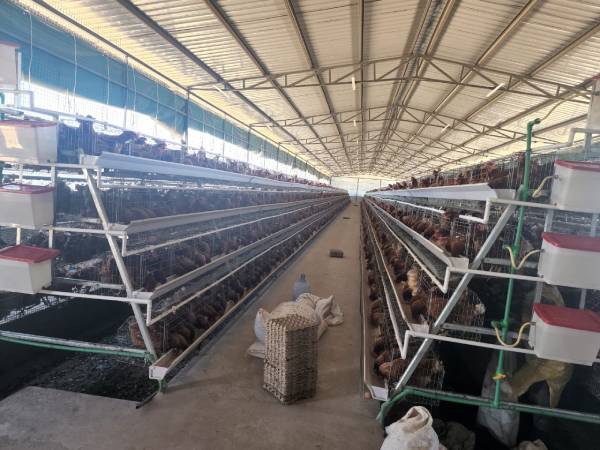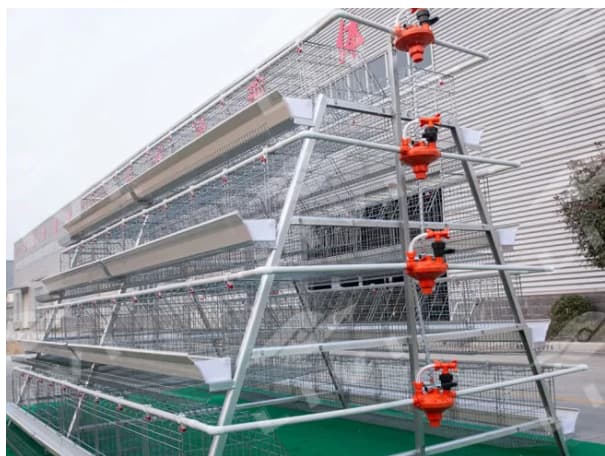In the world of poultry farming, choosing the right battery cage system is crucial for optimizing productivity, ensuring animal welfare, and managing costs. The debate between automatic and manual battery cages is ongoing, with each system offering distinct advantages and disadvantages. This article explores these two systems in detail, helping you decide which is right for your poultry farm.

Understanding Battery Cage Systems
Battery cage systems are a common method of raising poultry, especially egg-laying hens. These systems involve housing birds in individual or group cages stacked in tiers. The primary goal is to maximize space and resource efficiency. However, the choice between automatic and manual systems can significantly impact farm operations.
Automatic Battery Cage Systems
Automatic battery cage systems are designed to minimize labor requirements and enhance productivity. These systems typically include automated feeding, watering, egg collection, and manure removal. A computer controls the system, monitoring and adjusting environmental conditions such as temperature, humidity, and ventilation.

Advantages of Automatic Battery Cages
- Reduced Labor Requirements: Automation significantly cuts down the need for manual labor, allowing farm operators to focus on other essential tasks.
- Increased Productivity: With automated processes, farms can achieve higher productivity levels, ensuring a steady supply of eggs.
- Improved Feed Efficiency: Automatic systems ensure precise feed distribution, reducing waste and optimizing feed usage.
- Reduced Disease Transmission: Controlled environments minimize the risk of disease outbreaks among poultry.
- Better Environmental Control: Automated systems allow for precise control over environmental factors, creating optimal living conditions for the birds.
Disadvantages of Automatic Battery Cages
- High Initial Investment Costs: The technology and equipment required for automation can be expensive to purchase and install.
- Potential for Mechanical Failures: Reliance on machinery means there’s a risk of breakdowns, which can disrupt operations.
Automatic battery cage systems are ideal for large-scale egg producers aiming to minimize labor costs and maximize productivity. However, careful consideration of bird welfare is essential.
Manual Battery Cage Systems
Manual battery cage systems require more labor as they involve manual feeding, watering, egg collection, and manure removal. These systems are controlled by human operators who monitor and adjust environmental conditions.

Advantages of Manual Battery Cages
- Lower Initial Investment Costs: Without the need for expensive machinery, manual systems are more affordable to set up.
- Greater Flexibility in Management Practices: Human operators can make adjustments based on real-time observations, allowing for personalized care.
- Improved Animal Welfare: Manual systems often allow for more direct interaction with the birds, enhancing their welfare.
- Reduced Risk of Environmental Pollution: With careful management, manual systems can minimize waste production and environmental impact.
Disadvantages of Manual Battery Cages
- Higher Labor Requirements: More human resources are needed, increasing operational costs.
- Lower Productivity: Manual processes can be slower, potentially reducing overall productivity.
Manual battery cage systems are suitable for small-scale egg producers who prioritize cost management and animal welfare. However, they require more labor and may result in lower productivity.
Comparing Automatic and Manual Battery Cages
To help you decide, here’s a quick comparison of the two systems:
| Feature | Automatic | Manual |
|---|---|---|
| Labor Requirements | Low | High |
| Productivity | High | Low |
| Feed Efficiency | Good | Poor |
| Disease Transmission | Low | High |
| Environmental Control | Good | Poor |
| Initial Investment Costs | High | Low |
| Environmental Pollution | High | Low |
Choosing the Right System for Your Farm
The best battery cage system for your operation depends on several factors, including the scale of your farm, budget, labor availability, and desired level of animal welfare.
- For Large-Scale Producers: Automatic battery cages may be the best option due to their efficiency and productivity benefits. However, it’s crucial to implement measures that ensure the welfare of the birds.
- For Small-Scale Producers: Manual battery cages may be more suitable, offering cost savings and better animal welfare. Be prepared to invest more in labor and potentially face lower productivity.
Conclusion
In conclusion, both automatic and manual battery cage systems have their unique advantages and disadvantages. Your choice should be guided by the specific needs and goals of your poultry farm. Whether you opt for the high-tech efficiency of automation or the hands-on approach of manual systems, prioritize the welfare of your birds and the sustainability of your operations.
By understanding the nuances of each system, you can make an informed decision that aligns with your farm’s objectives. For further insights and guidance, consider consulting with poultry farming experts or exploring additional resources to optimize your battery cage system.
